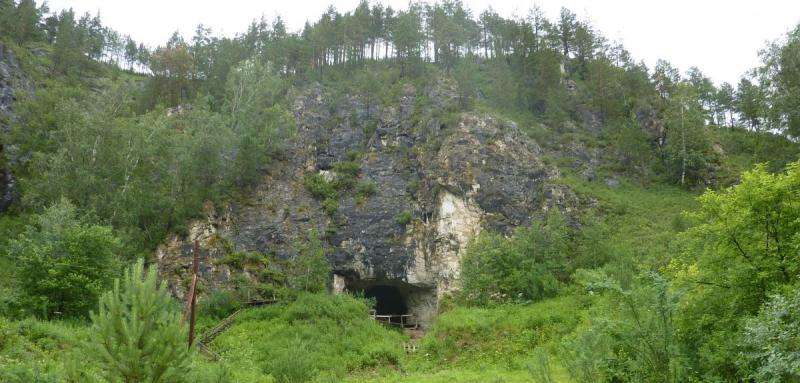Novel collagen fingerprinting identifies a Neanderthal bone among 2,000 fragments

Scientists from the universities of Oxford and Manchester have used a new molecular fingerprinting technique to identify one Neanderthal bone from around 2,000 tiny bone fragments.
All the tiny pieces of bone were recovered from a key archaeological site, Denisova Cave in Russia, with the remaining fragments found to be from animal species like mammoths, woolly rhino, wolf and reindeer. It is the first time that researchers have identified traces of an extinct human from an archaeological site using a technique called 'Zooarchaeology by Mass Spectrometry' or ZooMS.
From just a microscopic sample of bone, their analysis revealed the collagen peptide sequences in the bone that mark out one species from another. Their paper, which appears in the journal Scientific Reports, suggests that ZooMS has huge potential to increase our understanding of human evolution, including the amount of interbreeding that went on between our closely related cousins and modern humans.
The international research team was led by Professor Thomas Higham and his student Sam Brown of the University of Oxford, with the developer of the ZooMS method, Dr Michael Buckley from the University of Manchester; the Max Planck Institute in Leipzig; Cranfield University; and the Institute of Archaeology and Ethnography, Russia. The sequences of collagen peptides in bone differ in tiny ways between different animal species. The team profiled the sequences using microscopic samples from 2,300 unidentified bone fragments from the site. They then compared the sequences obtained against a reference library of peptides from known animal species.
On discovering that one 2.5 cm-long piece of bone had a clear human fingerprint, Sam Brown said: 'When the ZooMS results showed that there was a human fingerprint among the bones I was extremely excited. After a lot of hard work, finding this tiny bone which yields so much information about our human past was just fantastic. The bone itself is not exceptional in any way and would otherwise be missed by anyone looking for possible human bones amongst the dozens of fragments that we have from the site.'
Study co-author Professor Svante Pääbo and his group from the Max Planck Institute in Leipzig found that the bone belonged to a Neanderthal on the basis of its mitochrondrial genome. The results suggest that this Neanderthal was most closely related to other Neanderthals in the Altai region and more distantly related to those further to the west. The Neanderthal bone was also radiocarbon dated and shown to be more than 50,000 years old, as expected based on its deep position in the site. Acid etching on the surface of the bone also shows that it probably passed through the stomach of a hyaena for a short time before it was deposited in the cave sediments, says the paper.
Denisova Cave in the Russian Altai region is a key site for archaeologists wanting to understand the nature of evolution over the last 100,000 years. Its cold climate means that bones from the cave are often exceptionally well-preserved in their DNA and collagen, which is ideal for genetics and radiocarbon dating. In 2010, Pääbo and his team discovered a new species of human, the so-called 'Denisovans' at the site, using state-of-the-art genetic methods. His team have also found that Denisovans, Neanderthals and modern humans interbred periodically with one another in Eurasia and Europe.
During the Ice Age, there were periods when the cave was also occupied by carnivores such as hyaenas and wolves that crunched the bones into tiny pieces. This is why more than 95% of the bone fragments excavated were difficult to identify.
Professor Thomas Higham said: 'This is a real breakthrough, showing that we can now use bioarchaeological methods like ZooMS to search the archaeological record and find even tiny fossil remains, where there are proteins that survive. In the Palaeolithic period, where we have Neanderthals, Denisovans and modern humans, this is potentially very important because if the fragments that we recover are big enough then we can date and analyse the DNA from the same bone. One of the big challenges is in understanding what happened when modern humans and Neanderthals met. We want to know over what period of time and where this happened. Fossils are the key, but for modern humans they are extremely rare in archaeological sites. We hope that more work like this will yield more human bone remains.'
More information: Identification of a new hominin bone from Denisova Cave, Siberia using collagen fingerprinting and mitochondrial DNA analysis. Scientific Reports, DOI: 10.1038/srep23559
Journal information: Scientific Reports
Provided by University of Oxford


















